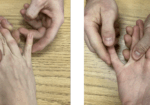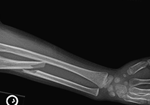10 maneras poderosas en que la educación continua para asistentes de terapia ocupacional mejora su carrera
archivado en Sin categoría
Comprender el papel de los asistentes de terapia ocupacional (OTA)
Los asistentes de terapeuta ocupacional (OTA) son miembros vitales del equipo de rehabilitación, ya que ayudan a los pacientes a recuperar o mejorar su capacidad para realizar actividades cotidianas. Trabajando bajo la supervisión de terapeutas ocupacionales (TO), los OTA implementan planes de tratamiento, monitorean el progreso y ajustan las estrategias según las necesidades del paciente.
A medida que evoluciona el panorama sanitario, también evoluciona el papel de las OTA. Ante la creciente demanda en áreas como geriatría, pediatría y salud mental, las OTA deben mantenerse al día con las mejores prácticas del sector. La formación continua se convierte en la clave para descubrir nuevas oportunidades y garantizar una atención segura, eficaz y centrada en el paciente.

Por qué la educación continua es esencial para los OTA
La formación continua (EC) no es solo un requisito, sino un compromiso profesional. Por qué es importante:
- Mantiene activa la certificación:Las CEU (Unidades de Educación Continua) a menudo son necesarias para renovar certificaciones de organismos como NBCOT (Junta Nacional para la Certificación en Terapia Ocupacional).
- Mejora la calidad de la atención:Ayuda a las OTA a mantenerse actualizadas con prácticas basadas en evidencia, mejorando los resultados de los clientes.
- Promueve el avance profesional:Las nuevas habilidades abren puertas a promociones, roles de liderazgo y áreas especializadas como la terapia manual o la integración sensorial.
- Genera confianza y credibilidadMantenerse informado aumenta la autoestima profesional y la confianza del empleador.
Tipos de oportunidades de educación continua disponibles
Las OTA ofrecen diversas opciones de desarrollo profesional. Algunas de las más populares incluyen:
- Cursos en línea:Ideal para flexibilidad y aprendizaje a su propio ritmo.
- Talleres presenciales:Excelente para desarrollar habilidades prácticas y establecer contactos.
- Conferencias en vivo:Ofrecemos análisis profundos de temas específicos y exposición a nuevas herramientas y métodos.
- Programas de Certificación Especializada:En áreas como neurorehabilitación, terapia escolar y más.
Cada tipo se adapta a diferentes estilos de aprendizaje, por lo que los OTA pueden combinarlos según sus preferencias y objetivos profesionales.
Requisitos estatales y organismos de acreditación
Antes de elegir cualquier curso, es fundamental comprender el marco regulatorio:
- AOTA (Asociación Americana de Terapia Ocupacional):Establece estándares de calidad para los CEU.
- NBCOT:Requiere que los profesionales obtengan Unidades de Desarrollo Profesional (PDU) para la recertificación.
- Juntas Estatales de LicenciasCada estado puede tener requisitos únicos de CEU. Por ejemplo, California exige 24 horas de CE cada dos años.
Asegúrese siempre que el curso o proveedor esté reconocido por estos organismos de acreditación para garantizar que sus esfuerzos cuenten para obtener la licencia.
Aprendizaje en línea vs. presencial: ventajas y desventajas
| Característica | Aprendizaje en línea | Aprendizaje en persona |
| Flexibilidad | Alto: aprende en cualquier momento y en cualquier lugar | Limitado – horario y ubicación fijos |
| Interacción | A menudo limitado a foros o chats. | En tiempo real con compañeros e instructores |
| Costo | Generalmente más asequible | Puede implicar viajes y alojamiento. |
| Habilidades prácticas | Solo simulado o teórico | Práctica supervisada en el mundo real |
Ambos formatos tienen beneficios únicos y muchos profesionales se benefician al combinarlos a lo largo de sus carreras.
Las mejores plataformas en línea para la educación continua de OTA
Al elegir dónde aprender, considere plataformas confiables conocidas por su contenido de calidad e interfaces fáciles de usar:
- MedBridge – Ofrece videotecas integrales y seguimiento de CEU.
- TerapiaOcupacional.com – Planes de membresía asequibles con acceso a más de 500 cursos.
- CEU360 – Soluciones personalizables para terapeutas individuales y equipos.
- Aspire OT Creado por y para agencias de viajes online. Ofrece contenido especializado, dirigido por profesionales.
Estas plataformas están acreditadas, son accesibles y se adaptan a las necesidades de las OTA.
Certificaciones especializadas y habilidades avanzadas
Las certificaciones especializadas permiten a los OTA profundizar su experiencia en áreas específicas, lo que mejora tanto la satisfacción profesional como las oportunidades de empleo. Algunas especialidades con alta demanda incluyen:
- Pediatría:Aprenda sobre el juego terapéutico, la integración sensorial y las intervenciones escolares.
- Terapia de manos:Se centra en la rehabilitación de las extremidades superiores y técnicas de férulas.
- Geriatría:Abarca la prevención de caídas, el cuidado de la demencia y el entrenamiento de movilidad.
- Salud mental:Incluye estrategias para la ansiedad, la depresión e intervenciones conductuales.
Estas certificaciones a menudo vienen con créditos CEU adicionales y pueden marcar una diferencia significativa en la efectividad clínica y el potencial de ingresos.
Costos y opciones de financiamiento para la educación continua
Continuar sus estudios puede ser una inversión financiera, pero hay muchas maneras de aliviar la carga:
- Reembolso del empleador:Muchos hospitales, centros de rehabilitación y sistemas escolares ofrecen reembolso parcial o total de la matrícula para actividades de CEU.
- Becas y subvenciones:Organizaciones como AOTA ofrecen becas competitivas para formación especializada.
- Deducciones fiscales:Los gastos de CEU pueden calificar como deducibles de impuestos si están relacionados con el empleo actual.
- Cursos agrupados:Las plataformas a menudo ofrecen descuentos para membresías anuales o paquetes de cursos.
Al planificar inteligentemente, las OTA pueden ampliar sus conocimientos sin gastar una fortuna.
Cómo elegir los cursos CEU adecuados
Elegir las mejores oportunidades de formación continua implica más que simplemente encontrar el curso más económico. Aquí tienes algunos consejos clave:
- Acreditación:Asegúrese de que el curso esté reconocido por NBCOT o su junta estatal.
- Pertinencia:Elija cursos que se alineen con su rol actual o sus objetivos futuros.
- Credenciales de instructor:Busque cursos impartidos por terapeutas autorizados y con experiencia.
- Reseñas y calificacionesNo ignore lo que dicen sus compañeros: la retroalimentación del curso puede ahorrarle tiempo y dinero.
Un curso de CEU bien elegido no solo cumple con los requisitos de la licencia, sino que también inspira crecimiento y confianza.
Equilibrio entre trabajo, vida y educación continua
Muchos asistentes de formación continua (OTA) compaginan su trabajo a tiempo completo, su vida familiar y sus responsabilidades personales. Aquí te explicamos cómo mantener la formación continua a un ritmo razonable:
- Establezca metas realistas:Divida los requisitos de CEU en hitos mensuales o trimestrales.
- Utilice el tiempo de inactividad sabiamente:Escuche conferencias de audio durante sus viajes o mire módulos cortos durante los descansos.
- Crear un horario de estudioTrate el tiempo de CEU como una cita para garantizar la coherencia.
- Apóyese en el apoyo:Informe a sus familiares y compañeros de trabajo sobre su horario: ellos pueden ayudarle a hacerse responsable.
Con un poco de organización y compromiso, incluso las OTA más ocupadas pueden prosperar en su recorrido de aprendizaje.
El impacto de las CEU en el salario y las oportunidades laborales
La formación continua no solo cumple con los requisitos, sino que puede influir directamente en tu salario y tu trayectoria profesional. Aquí te explicamos cómo:
- Salarios más altos:Los OTA con certificaciones avanzadas suelen ganar más, especialmente en entornos especializados.
- Nuevos puestos de trabajo:La educación continua puede conducir a puestos de supervisión, funciones educativas o servicios de terapia especializados.
- Flexibilidad geográfica:Las habilidades acreditadas por la CEU facilitan el traslado y la práctica en otros estados.
- Práctica privada:Algunas OTA utilizan los CEU para avanzar hacia oportunidades empresariales como la consultoría o el coaching.
Invertir en uno mismo produce dividendos a largo plazo, tanto financieros como profesionales.
Historias de éxito de la vida real de las OTA
Sarah R., COTA/L de Texas:
Estuve años estancada en el mismo puesto escolar. Tras cursar CEU en integración sensorial y trastornos del espectro autista, conseguí un puesto de liderazgo en una clínica pediátrica multidisciplinaria.
Jason M., OTA de California:
Los cursos de MedBridge me ayudaron a obtener una especialización en geriatría, lo que me permitió obtener un aumento salarial y un nuevo puesto en un centro de atención a largo plazo.
Estas historias muestran cómo las decisiones estratégicas de educación continua pueden abrir puertas inesperadas.
Desafíos comunes y cómo superarlos
Incluso las OTA más dedicadas se enfrentan a obstáculos en su camino hacia la CEU. Los problemas más comunes incluyen:
- Agotamiento:Solución – Espaciar los cursos para evitar la sobrecarga.
- Altos costos:Solución: busque patrocinios de empleadores o descuentos en CEU.
- Falta de tiempo:Solución: Elija cursos a su propio ritmo y accesibles desde dispositivos móviles.
- Motivación:Solución – Establecer metas personales o aprender con un amigo.
La concientización y la planificación pueden convertir estos obstáculos en simples baches en el camino hacia el crecimiento.
Tendencias futuras en la educación continua de la OTA
El mundo de la salud está evolucionando rápidamente, al igual que la educación continua. Las tendencias emergentes incluyen:
- Simulaciones de IA y realidad virtual:Mejorar el aprendizaje práctico a través de experiencias inmersivas.
- Módulos de microaprendizajeContenido en porciones pequeñas que se adapta a horarios ocupados.
- Formación interdisciplinaria:Combinando el conocimiento de OT con la terapia del habla, la fisioterapia y la psicología.
- Mejora continua de las competencias:Alentar a los OTA a seguir comprometidos con el aprendizaje continuo a lo largo de sus carreras.
Mantenerse al tanto de estas tendencias garantiza que las OTA permanezcan a la vanguardia de la prestación de atención médica.
Preguntas frecuentes sobre la educación continua para OTA
P1. ¿Cuántos CEU necesita una OTA para renovar su licencia?
R: Varía según el estado, pero suele ser de 12 a 24 horas cada uno o dos años. Consulte siempre con la junta estatal.
P2. ¿Los CEU en línea cuentan para la renovación de la licencia?
R: Sí, si el curso está acreditado por NBCOT o la junta estatal.
P3. ¿Hay cursos CEU gratuitos para OTA?
R: Sí, algunos proveedores y empleadores ofrecen CEU gratuitos o de bajo costo. AOTA ofrece ocasionalmente seminarios web gratuitos.
P4. ¿Puedo usar el mismo CEU para NBCOT y mi licencia estatal?
R: A menudo sí, pero verifique los requisitos de ambas organizaciones para la aprobación dual.
P5. ¿Qué pasa si no completo los CEU a tiempo?
R: Puede correr el riesgo de que le suspendan la licencia o tener que pagar multas o completar créditos de recuperación.
P6. ¿Qué son las PDU y en qué se diferencian de las CEU?
R: Las Unidades de Desarrollo Profesional (PDU) son la versión de NBCOT de las CEU. Suelen ser intercambiables, pero la terminología difiere.
Conclusión: Crecimiento permanente a través de la educación continua
La formación continua para asistentes de terapeuta ocupacional es más que un requisito: es una hoja de ruta hacia una carrera más enriquecedora y gratificante. Ya sea que estés explorando nuevas especialidades, aspirando a un ascenso o simplemente manteniéndote al día, cada curso te acerca un paso más a la excelencia profesional.
Invierte en ti mismo. Aprende continuamente. Y nunca dejes de crecer.
Más para leer
Revisión del artículo sobre terapia de manos: la prueba de sinergia radial, una ayuda para diagnosticar la tenosinovitis de De Quervain
Chihua, L., Langford, PN, Sullivan, GE, Langford, MA, Hogan, CJ y Ruland, RT (2021) La prueba de sinergia radial: una ayuda para diagnosticar la tenosinovitis de De Quervain. MANO. epub antes de la impresión; 1-6. doi: 10.1177/15589447211057297 Revisión rápida Por: Case Peters The Skinny: la tenosinovitis de De Quervain es una patología común que implica hinchazón y engrosamiento de las vainas de los tendones...
Leer másTerapia de la mano: tratamiento conservador de las fracturas de Monteggia pediátricas
Tratamiento conservador de las fracturas de Monteggia pediátricas Las fracturas de Monteggia en niños comprenden aproximadamente el 2% de las fracturas de codo pediátricas e implican una fractura del cúbito proximal con dislocación de la cabeza del radio (Fig. 1). La principal preocupación de las fracturas de Monteggia incluye el tratamiento (tratamiento pediátrico de la fractura de Monteggia) y la reubicación de la cabeza radial, porque si se deja...
Leer másEficacia de la rehabilitación con realidad virtual tras una lesión de la médula espinal: una revisión sistemática
De Araújo, AVL, Neiva, JFDO, Monteiro, CBDM y Magalhães, FH (2019). Eficacia de la rehabilitación con realidad virtual después de una lesión de la médula espinal: una revisión sistemática. BioMed Research International, 2019(1), 7106951. https://doi.org/10.1155/2019/7106951 Eficacia de la rehabilitación con realidad virtual después de una lesión de la médula espinal Emilee Sanders, OTS The Skinny: La realidad virtual (RV)…
Leer másKit sensorial para hipersensibilidad
Escrito por Melissa Miller Introducción Después de una lesión o cirugía, los nervios de la piel y los que rodean el área lesionada pueden volverse demasiado sensibles. Esto puede provocar dolor o una sensación desagradable por estímulos que normalmente no provocarían molestias. Por ejemplo, un ligero toque de una camisa o de un determinado material puede parecer como agujas para...
Leer más¡Regístrese para recibir actualizaciones directamente en su bandeja de entrada!
Regístrese con nosotros y le enviaremos publicaciones periódicas en el blog sobre todo lo relacionado con la terapia de manos, avisos cada vez que subamos nuevos videos y tutoriales, junto con folletos, protocolos y otra información útil.






